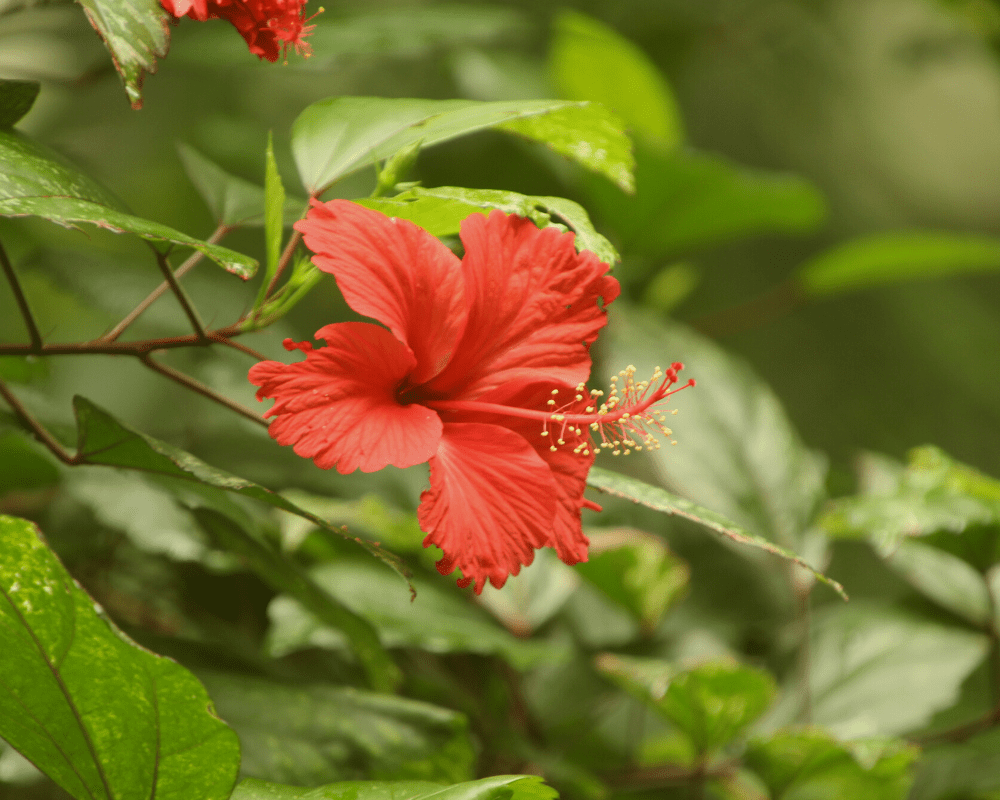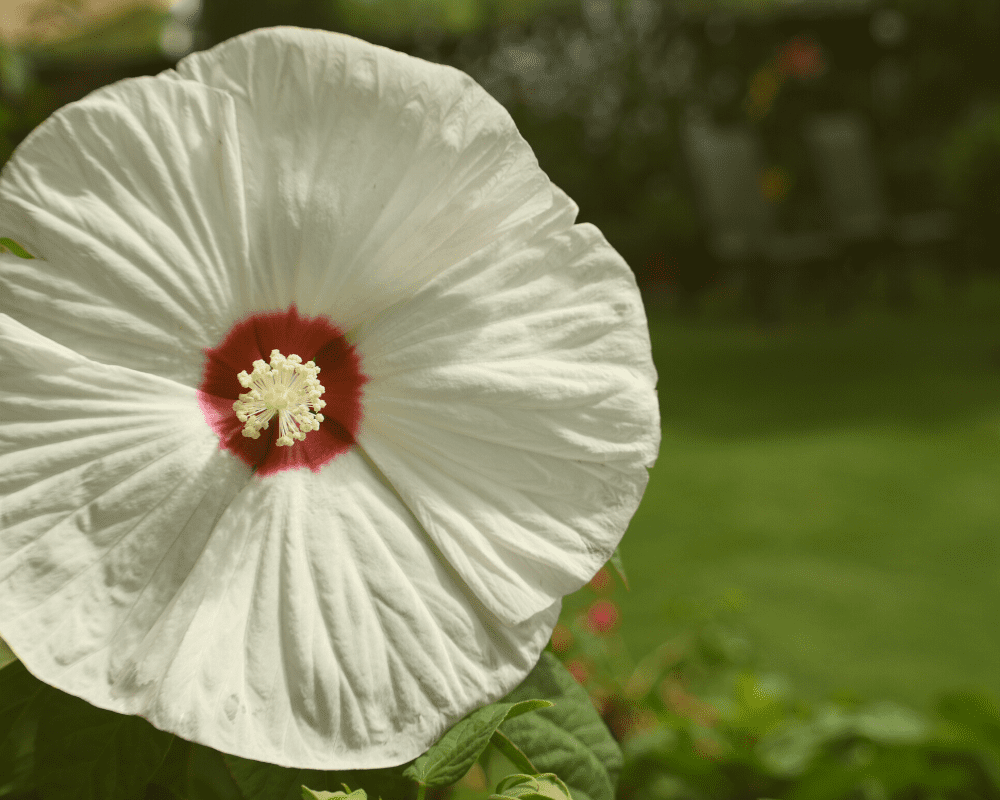Hardy Hibiscus just may be the answer for those of you who love hibiscus but get frustrated at how susceptible they are to cold temperatures. With some winter protection, the hardy variety of hibiscus can survive our winters and greet you again each year. Sound good? Let’s take a closer look at the hardy hibiscus.
About Hardy Hibiscus


Within the family of hardy hibiscus, there are multiple varieties. ‘Moy Grande’, ‘Flare’, and ‘Lord Baltimore’, are among the varieties that are also Texas Superstar® plants. These are plants that have earned this prestigious title by enduring field trials that test for quality and reliability in plants grown in Texas. We love the plants in the Texas Superstar® list and have been happy to report that we agree that this beauty deserves to be on it.


Hardy hibiscus, also called Rose Mallow, bloom from summer to frost here in San Antonio, Texas. Their gorgeous, dramatic blooms can reach 8″- 12″ across in diameter! Red, white, pink, and swirl are the color selections you will find for these gorgeous plants. At maturity, the average size is about 3′-5′ tall x 3′-4′ wide. Their luscious, deep-green foliage makes a beautiful backdrop in garden beds in the landscape, but we also love them as stand alone specimens in containers.


I mentioned in the first paragraph that hardy hibiscus survive our winters. They will still most likely lose their leaves and probably die back to the ground, but they are root hardy to -20°F, so each spring they will sprout right back up from the ground once the soil warms up. Even if your hardy hibiscus doesn’t die back, it’s advised to cut the stems down in early spring each year for fresh growth.
Hardy hibiscus are best planted in soil that is well-draining and has been amended with compost to offer plenty of rich, organic material as nutrients to the plant. Full sun offers the best blooms; these babies can take the heat and thrive! Moist soil is best, so they appreciate regular water, but you still need to make sure that your soil is well-draining; no standing water is tolerated. The aforementioned care will offer the best care and most productive blooms, but hardy hibiscus can tolerate a little shade too (afternoon) and even grow in less desirable soils.
Hardy hibiscus can create a showy display in your pollinator gardens too. You’ll have many butterflies and bees excited to visit the giant blooms. It’s no wonder the hardy hibiscus has become a longtime favorite of many Texas gardeners. Maybe it will become one of your favorites too! Both of our Rainbow Gardens locations just received a healthy supply of these beauties. Come visit and pick one out for yourself!
~The Happy Gardener, Lisa Mulroy


How does Hardy Hibiscus do in shady areas? The front of my son and my daughter-in-law’s house is fully shaded. I am helping up their landscape and looking for great shade-loving plants. Thanks
Hardy hibiscus is not a shade loving plant. These do best in the sunshine. You can access our shade plant list for som eother suggestions that would be more suitable. https://www.rainbowgardens.biz/wp-content/uploads/2020/09/FULL-SHADE-TOLERANT-PLANTS.pdf
Will dear feed on these hibiscus
Hi Rick,
Yes they will, like candy.